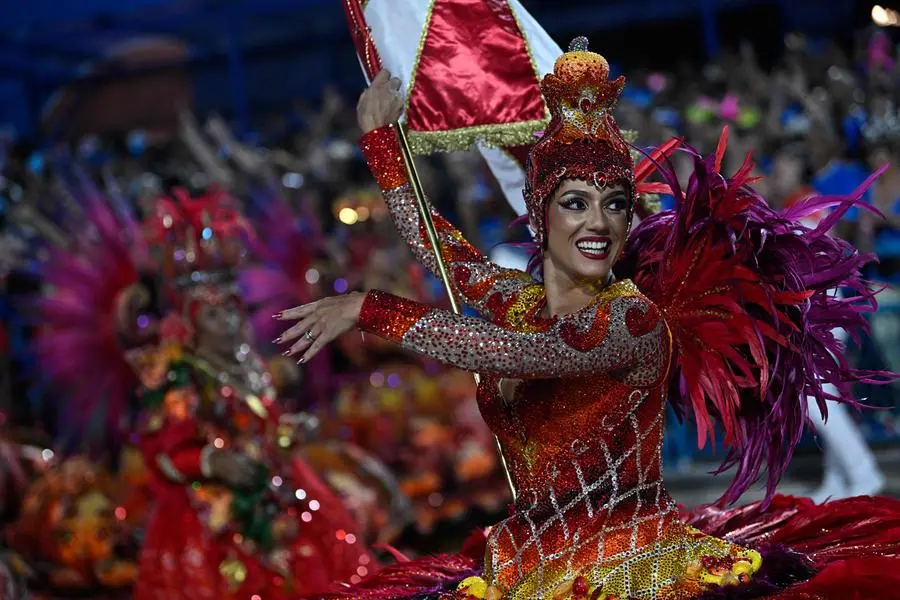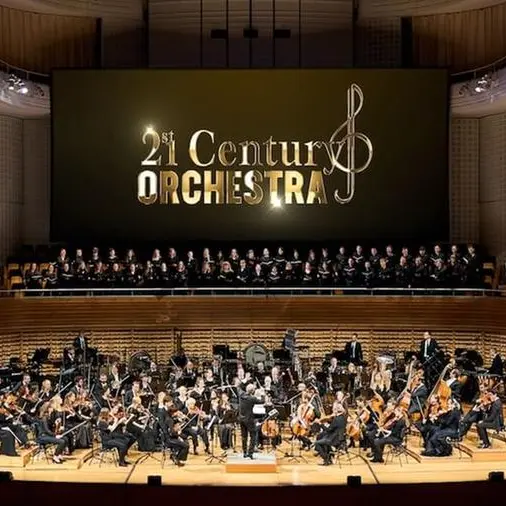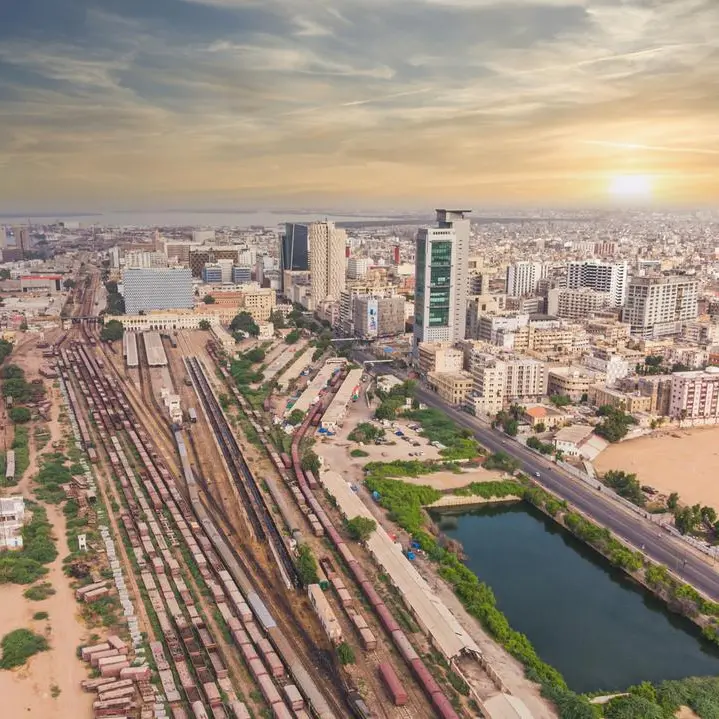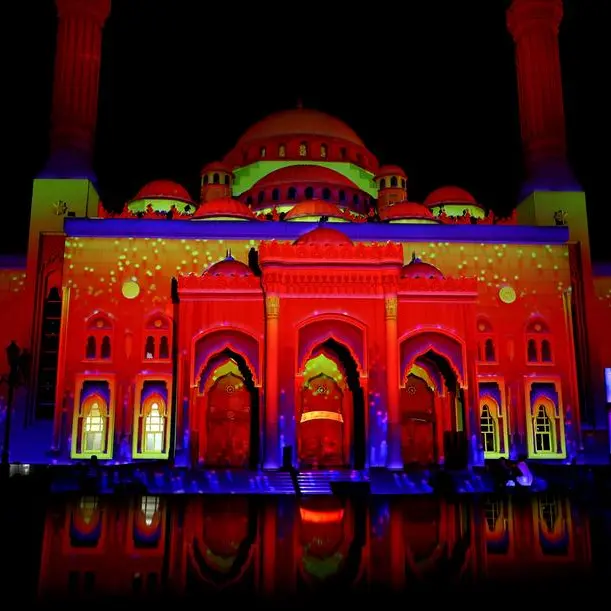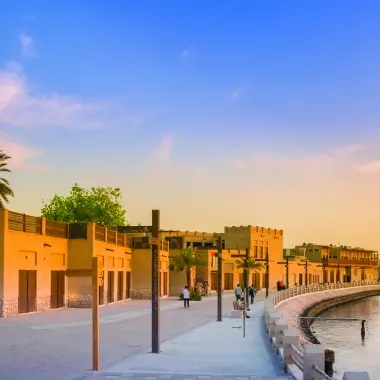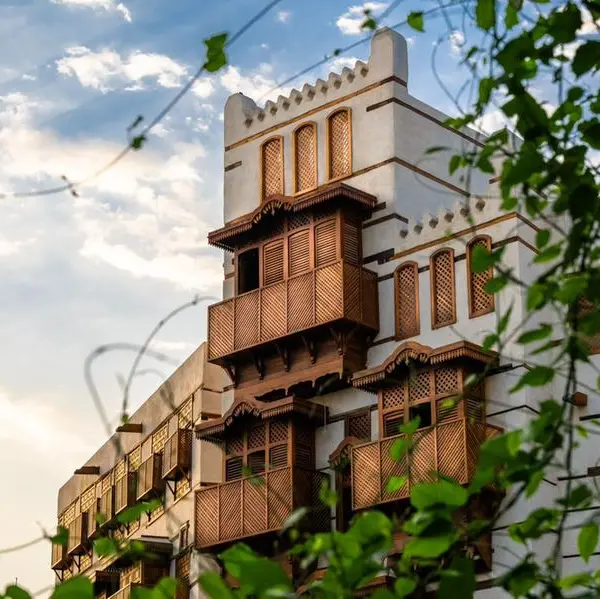PHOTO
Shaking the ground to the beat of their drums, Rio de Janeiro's famed carnival parades returned Sunday in a swirl of glitter, sequins and samba, the festival's first full-on edition since Covid-19 and Brazil's bitterly divisive elections.
The world's biggest carnival hit peak party level as Rio's top samba schools opened their annual parade competition in the giant avenue-turned-stadium known as the "Sambadrome."
"Celebrating carnival after the pandemic is a feeling of freedom and happiness so big I can't even describe it," said 25-year-old Debora Soares, who was beaming in a sequin-studded costume atop a giant green-and-gold float as she prepared to dance in samba school Imperio Serrano's parade.
"It also comes after a historic, watershed election, after all the darkness we went through. Carnival brings the hope that the coming years will be better," added Soares, an event planner and model from Cidade de Deus, or "City of God," the Rio favela made famous by the 2002 film of the same name.
Rio is ready to party, after two pandemic-disrupted carnivals and October's presidential election, in which veteran leftist Luiz Inacio Lula da Silva ousted incumbent Jair Bolsonaro, an ultra-conservative accused of authoritarian tendencies.
The beach city canceled the festival in 2021 because of the pandemic. It held a reduced version last year, banning the massive street parties known as "blocos" and postponing the parades by two months because of a surge of Covid-19, which has claimed nearly 700,000 lives in Brazil.
- 'Celebrating life' -
Now, the full-scale festival is back.
"The happiness is double. With this carnival we can celebrate the end of (Bolsonaro's) government and leave behind the horrors of the pandemic," Amanda Olivia, 34, told AFP as she prepared to parade with renowned samba school Mangueira.
The samba schools, the pride of Rio's impoverished favelas, spend months making the sparkling costumes and fantastical floats that are the trademarks of the parades.
At the two-night competition, the city's top 12 samba schools vie for the title of parade champions with dazzling floats, thundering music, and thousands of singers, drummers and dancers in revealing, jewel-encrusted, feather-covered costumes.
The parades were often politically charged during the Bolsonaro years, with thinly veiled criticism of the far-right government over issues such as racism, religious intolerance, environmental destruction and Brazil's disastrous management of Covid-19.
This year's parades are less political.
Many of the schools have returned to their roots, with themes linked to founding figures of the samba genre and the Afro-Brazilian culture from which it emerged.
Sete Soledade, a 39-year-old artist, said he was "exhausted but happy" after climbing down from his float at the finish line for reigning champions Grande Rio, whose exuberantly colorful parade paid tribute to the great singer-songwriter Zeca Pagodinho.
"We went through a really difficult period, in terms of both the pandemic and politics. Now we're full of hope for this new Brazil, this new moment," he said, decked out in a green, red and gold costume designed to look like a pack of candy.
"We suffered a lot during the pandemic because of our denialist government. A lot of people died. It's such a great celebration of life to be here now, hugging and singing together."
- 'Goosebumps' -
Not all Rio residents love carnival. Some do their best this time of year to escape the city and the millions of revelers who pour into the streets.
For others, it is life itself.
"Carnival is contagious. It's part of our culture, it's in our DNA -- that bohemian spirit of dancing samba, enjoying life," said Lucas Pinheiro, 27, a civil servant who was sitting outside his house, two blocks from the "Sambadrome," watching the parades on a TV set up on the sidewalk -- a family tradition for more than two decades.
Iaraci Santos, a 64-year-old nurse, has been participating in the parades since she was seven years old.
She said entering the parade venue never got old, with its bright lights, booming bass drums and 70,000-strong crowds.
"Every time I enter that avenue is like the first time," she said.
"It always makes me want to cry. I get goosebumps every time."
